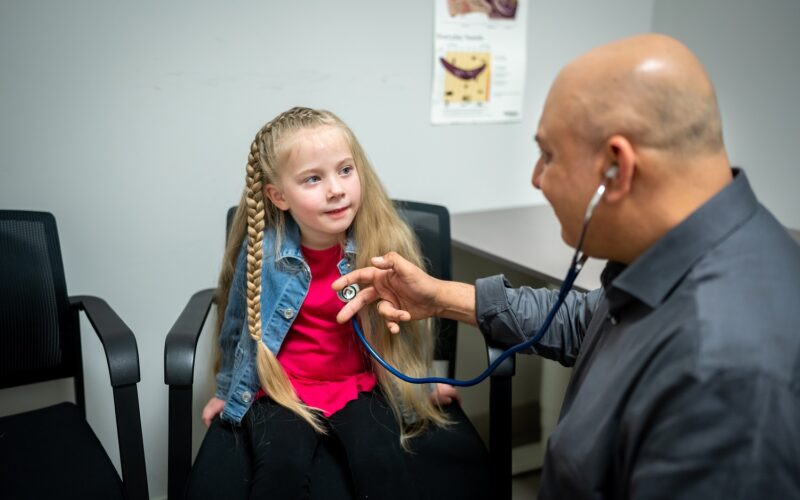If you are the parent of a child with autism, you know how difficult it can be to tell what is causing challenging behaviour. Though social, psychological and environmental factors can be triggers, you might be surprised to learn that behaviour can also be caused by physical discomforts like constipation. If this is the source of your child’s distress, relieving this discomfort can help your family get back on track. Some families experiencing challenging behaviours with a suspected medical trigger may also benefit from our Urgent Response Services.
Constipation in autism
Children who experience constipation have infrequent and uncomfortable bowel movements. This usually happens because stool remains in the colon for too long. Most children experience constipation at some point, but it is more common in children with autism. Reasons for this include:
- Food sensitivities: If your child with autism is a picky eater, they may not eat many fruits or vegetables. This means they are getting less fibre in their diet, which can contribute to constipation.
- Physical inactivity: Children with autism often enjoy screen-based activities like watching videos or playing computer games. A lack of exercise is often associated with constipation since physical activity helps regulate the GI system.
- Medication: Many children with autism take medication for mental health or behavioural issues. Constipation is a common side effect. Constipation can also be a side effect of over-the-counter medications like Benadryl.
How to recognize signs of constipation in children with autism
It’s often difficult to recognize when constipation is the source of your child’s discomfort, particularly if they are toilet trained, struggle to find the words to describe their physical experiences or are nonspeaking. Because of the lack of clear symptoms, it’s important to look for signs that constipation may be contributing to your child’s behaviour. These can include:
- Disinterest in food or refusing to eat at mealtimes.
- Self-injury, like hitting their abdomen, may indicate stomach pain.
- Avoiding the bathroom or showing they don’t like toilet time may indicate pain when they go to the bathroom).
- Frequent complaints of stomach pain.
- Accidents involving diarrhea. Parents sometimes miss this sign because it’s counter-intuitive. However, it’s useful to know that this can happen when the liquid stool makes its way around the backed-up stool.
What to do if your child with autism is constipated
It’s important to understand that if constipation is left untreated, it can sometimes become serious. Chronic constipation is potentially dangerous and can cause structural changes in the colon. In cases where the colon is very backed up, children may need to be given a high dose of laxatives. But there are many things you can do to support your child before this condition becomes urgent. Here are some tips to help you intervene early to ease your child’s discomfort
- Use a diary: Document each time your child has a bowel movement or ask your child tokeep a record. This can be done in writing or with pictures. The diary will allow you to get a better sense of how serious the issue is.
- Dietary changes: Ensure your child is drinking enough water every day. Boosting dietary fibre will also go a long way towards managing constipation, but this can be challenging if your child is very picky. Get creative! Blend veggies into tomato sauce and serve it with pasta, cut veggies into fun shapes, hide them in waffles and pancakes or blend them into soup or smoothies. Keep trying different vegetables. Eventually, you will stumble on something your child loves.
- Avoid mealtime battles: It’s important to keep mealtime relaxed. Place the food in front of your child – if your child doesn’t like it, take it away. The key is to ensure mealtime doesn’t become a battle. If you get upset or push too much, your child may become stressed about mealtimes.
- Make toilet time easy: Make toilet time as stress-free as possible. Sitting comfortably on the toilet is important, but some toilets are too tall for young children. If this is the case, try placing a step stool in front of the toilet. This will help your child reach the toilet seat while encouraging them to sit up straight. This can help to encourage a bowel movement.
- Time training: Also called bowel retraining, time training involves encouraging your child to go to the bathroom at the same time every day to help train their body to have regular bowel movements. Take advantage of the gastrocolic reflex. This is when eating or drinking a warm beverage stimulates movement, telling our bodies it’s time to use the toilet. Give your child a snack or warm beverage at the same time every day. About 20 to 30 minutes later, the child may go to the bathroom. Sticking to the same pattern every day is the key to success. Parents can bring an iPad to the bathroom, which will make time training feel fun and help your child relax on the toilet.
Know when to seek help for your child with autism
If constipation continues after a variety of at-home strategies, it may be time to get professional support. Here’s when it’s time to get help from a healthcare provider:
- Your child refuses to eat new foods that will help resolve the issue
- There is blood in the stool
- Your child’s abdomen is distended
- Your child frequently complains of abdominal pain that doesn’t seem to go away
If home-based strategies aren’t working, medication may be needed to treat your child’s constipation.
If you’re a parent or caregiver whose child has new or escalating high-risk behaviours like self-injury, aggression, or property destruction, you may be eligible for Urgent Response Services for children and teens registered with the Ontario Autism Program (OAP). Urgent Response Services offer brief, rapid support from a multidisciplinary team to quickly address new behaviours that have been emerging in the last 14 days or less.
Physical discomforts and medical conditions are one of many potential behaviour triggers, along with social, psychological and environmental factors.
About Urgent Response Services
This resource was written with support from staff in Urgent Response Services. Urgent Response Services are part of the Ontario Autism Program. They were created to support children or youth with an emerging urgent need. Surrey Place leads Urgent Response Services for Toronto Region in partnership with 2-Spirited People of the 1st Nations, Community Living Toronto, Family Service Toronto, Geneva Centre, Holland Bloorview, Kerry’s Place, Lumenus, SAAAC, SMILE Canada and Strides Toronto.
Resources
If you enjoyed this article, check out these other great autism resources:
Autism challenging behaviours
Autism mental health resources
Autism transition resources
- Tips for Helping Your Child Transition Between Activities
- How to Set Up an IAS in the Home
- Tips for Teaching Executive Functioning Skills
- How to Use a Visual Schedule to Support Routines
- How to Get Started with Toilet Training


